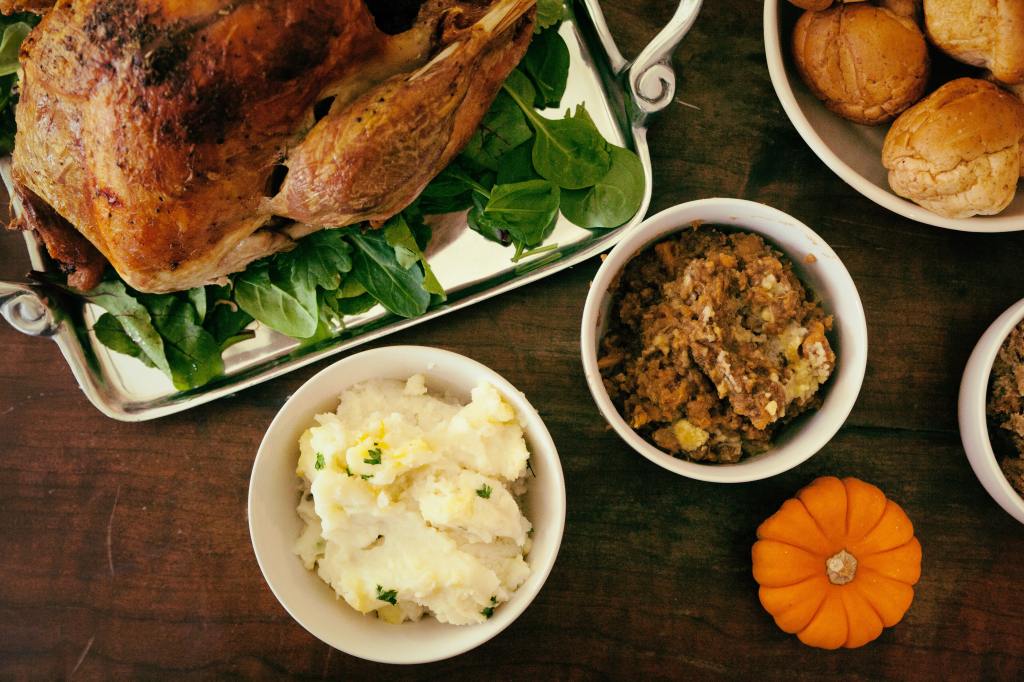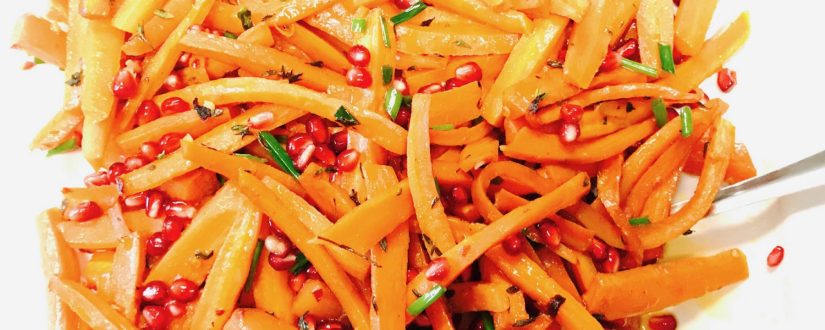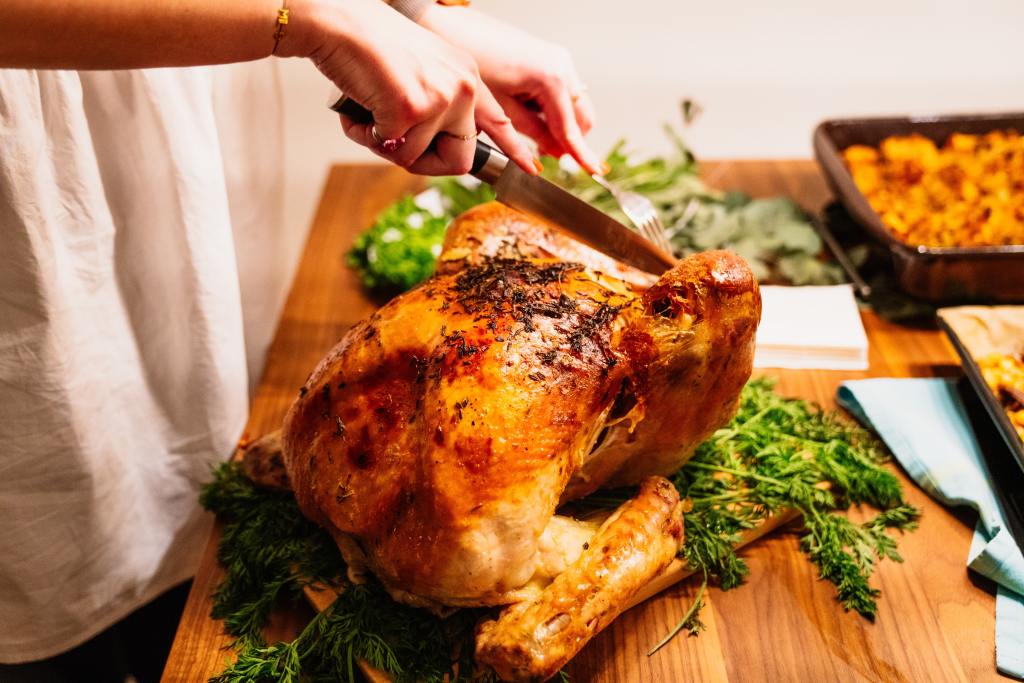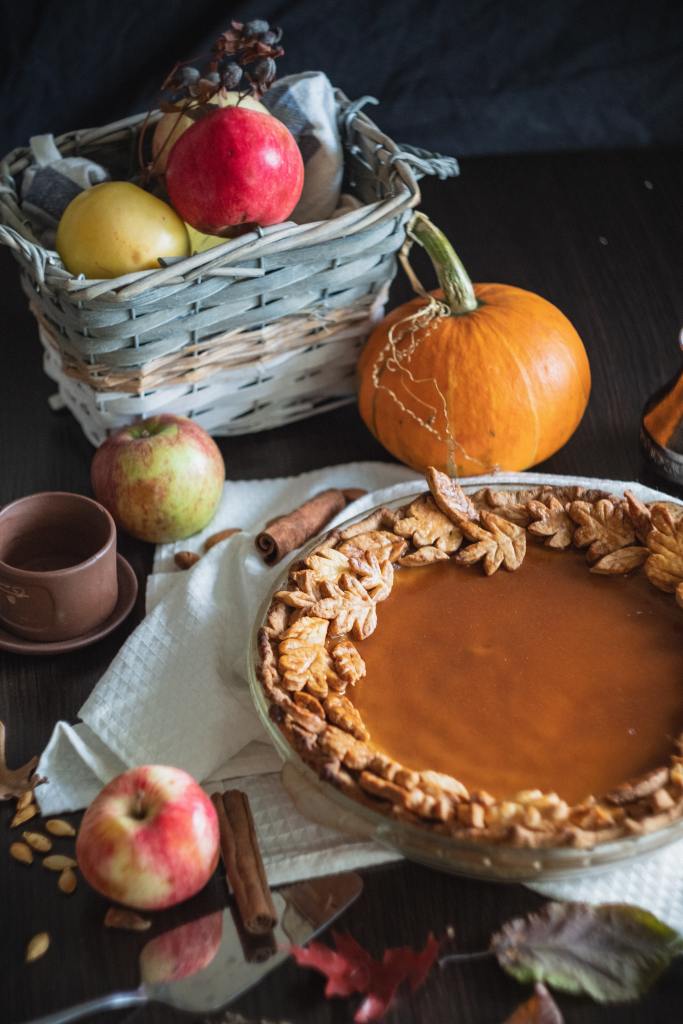Gardening is one of the most rewarding activities that one can engage in. It’s an activity where your labors are rewarded with bountiful harvests that can be turned in tasty meals for your family. Thanksgiving is just around the corner and besides the opportunity to count our blessings, it is also an opportunity to utilize items that we grew in our gardens this growing season as part of the meal. While most of our Thanksgivings will look different this year because of COVID19 our celebrations can with careful planning include some of our favorite dishes made a bit healthier but just as delicious. If you opt to eat your current version of a Thanksgiving meal do not feel guilty. It is one day out of 365 and if you follow a generally healthy diet one day in the greater scheme of things will have limited impact. If however, your diet could benefit from some changes this article is for you.

Holidays are often seen as an opportunity to indulge by preparing and eating large quantities of food. It is estimated that the average American consumes over 3000 calories on Thanksgiving. Each year it seems that there is a new high calorie dish to add to the table. Most graze all day eating their first meal at lunchtime followed by desert and then in many cases another dinner to sample all the things that may have missed on the first trip around the food table. The traditional Thanksgiving dinner has many high calorie dishes such as green bean casserole, mashed potatoes, pumpkin pie, fried turkey and southern style greens. These dishes using items from your gardens can be made healthier with just a few changes.
One of the most popular side dish served at Thanksgiving is green bean casserole. It is traditionally made with heavy cream, milk and cream of mushroom soup which adds loads sodium and extra calories. By opting instead to use skim milk, reduced sodium low fat cream of mushroom soup you can shave off many calories and drastically reduce the sodium content. This green bean casserole recipe is made using healthy substitutes. You may also opt to try other ways of preparing green such as this green bean almondine recipe or trying another side dish such as this carrot with pomegranate and chives recipe using home grown carrots and chives or a leafy green salad harvested fresh from your garden served with a light vinaigrette.

Mash potatoes is another staple dish of the Thanksgiving table. When prepared in the traditional manner it adds 90-120 calories to your meal not including gravy. Using non-fat Greek yogurt , fat free sour cream, skim milk and reducing the butter can shave off some of the calories and fat. Two other options to consider are mashed cauliflower instead of mashed potatoes or using sweet potatoes to make these maple mashed sweet potatoes, a lighter version of sweet potato casserole, or this yummy sweet potato gratin. Sweet potatoes are a great source of betacarotene and have more fiber than white potatoes. Whatever potato you choose to have making the changes suggested here will yield a healthier dish.

The star of the Thanksgiving meal for many years has been the turkey and if you are fortunate enough to raise turkey for meat you can prepare your own turkey as part of your meal or you may purchase one from the store. One method of preparing turkey that is gaining in popularity is frying the turkey. This method adds one fourth more calories and and almost double the fat of the traditionally baked turkey. There are several ways to prepare turkey which are lower in fat and calories than frying such as baked, jerked, and smoked. Try one of these methods this year and you might discover a new favorite for your family to enjoy for years to come.
Another area where the garden can influence Thanksgiving dinner is with dessert. Homegrown pumpkins can be the start of a pumpkin pie, pumpkin mousse, or pumpkin tarts. If pumpkin is not your thing consider using some of the sweet potatoes you grew in a pie, or a parfait, or perhaps in making these harvest sweet potato tarts or even a low fat low sugar cheesecake. The dessert table can be difficult to navigate with its sugar laden tasty treats but there are healthy desserts that can be made from items from your garden that your family will be happy to have year after year.

This Thanksgiving whatever meal you choose to prepare for your family make it the best one you have ever had. One thing we all have learned this year is that time is not promised to anyone. Enjoy the fruits of your garden labor with the people that matter the most to you. Wishing you all a very happy and healthy Thanksgiving season.










